"Cherishing Little Steps - A Haven for Baby and Family Journeys"
Creative Learning Environments
Imagine stepping into a classroom where the air crackles with curiosity, where traditional boundaries are broken, and where the possibilities for learning seem limitless. In this creative learning environment, students are not passive recipients of information, but active participants in their own education. They are encouraged to think critically, solve problems, and express their ideas in unique and imaginative ways.
But what exactly makes a learning environment creative? And why is it so important for the future of education? In the following discussion, we will explore the benefits of fostering creativity in students, the characteristics of a creative classroom, and strategies for cultivating a space where innovation and growth thrive.
Get ready to embark on a journey where the boundaries of traditional education are pushed aside, and where the power of creativity takes center stage.
Key Takeaways
- Creative learning environments foster collaboration among students.
- Encouraging creativity empowers students to question the status quo.
- Creative thinking allows students to explore possibilities and make new discoveries.
- Emphasizing creativity prepares students for future challenges.
The Importance of Creativity in Education
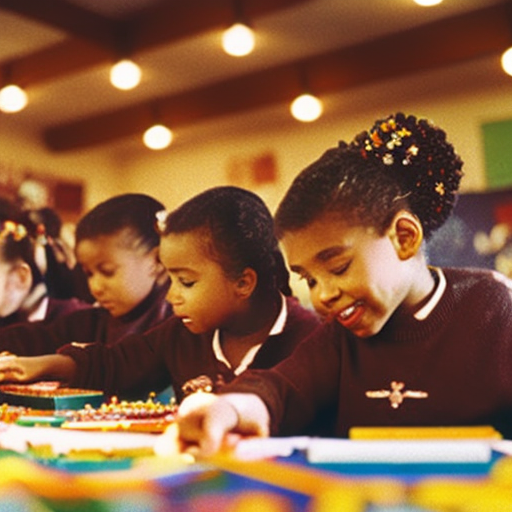
Creativity is an essential component in education, fostering innovation, critical thinking, and problem-solving skills. In today’s rapidly evolving world, the importance of imagination can’t be overstated. It’s through imagination that new ideas are born, paving the way for innovation and progress. When students are encouraged to think creatively, they develop a unique perspective and the ability to approach challenges from different angles. This not only enhances their problem-solving skills but also promotes a sense of adaptability and resilience.
By fostering innovation in education, students are empowered to become active participants in their own learning journey. They learn to question the status quo and seek alternative solutions, rather than accepting things at face value. This is crucial in a world that’s constantly changing and where new problems arise every day. Creative thinking allows students to explore possibilities and push the boundaries of what’s known, leading to new discoveries and breakthroughs.
Moreover, creativity in education helps students develop a deeper understanding of the subjects they’re learning. When students are encouraged to think creatively, they’re more engaged and motivated to explore different aspects of a topic. This not only enhances their learning experience but also promotes a sense of ownership and personal connection to the subject matter.
Benefits of a Creative Learning Environment
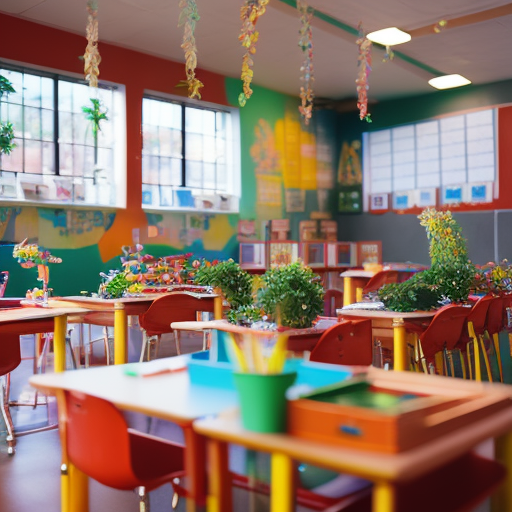
As you explore the importance of creativity in education, it becomes evident that a creative learning environment offers a multitude of benefits for students. One of the key advantages is that it helps develop creativity as a skill that’s highly valued in the workplace. In today’s rapidly changing world, employers are seeking individuals who can think outside the box and come up with innovative solutions to complex problems. By fostering a creative learning environment, schools can equip students with the necessary skills and mindset to thrive in the workplace of the future.
Furthermore, a creative learning environment has a significant impact on student motivation. When students are given the freedom to explore their own ideas and express themselves creatively, they become more engaged and enthusiastic about their learning. They’re no longer passive recipients of information, but active participants in their own education. This sense of ownership and agency boosts their motivation to learn and achieve their goals.
Research has shown that a creative learning environment not only enhances students’ academic performance but also promotes critical thinking, problem-solving, and collaboration skills. It encourages students to take risks, embrace failure as a learning opportunity, and develop resilience. By providing a space where students can experiment, explore, and create, educators are nurturing their students’ creativity and preparing them for success in the ever-evolving world.
Characteristics of a Creative Classroom

Creating a creative classroom requires intentional design and implementation of various elements that foster innovation, collaboration, and critical thinking. To cultivate an environment that nurtures curiosity and emphasizes the importance of imagination, consider incorporating the following characteristics:
-
Flexible Spaces: Arrange the classroom in a way that promotes movement and collaboration. Provide different areas for individual work, group discussions, and hands-on activities. This flexibility allows students to explore and engage with their learning environment.
-
Open-ended Tasks: Encourage students to think outside the box by assigning open-ended tasks that require them to use their imagination and creativity. These tasks can be project-based, problem-solving activities that allow for multiple solutions and interpretations.
-
Integration of Technology: Integrate technology tools and resources that support creativity and innovation. Provide access to digital platforms, coding programs, and multimedia tools that enable students to express their ideas in unique and engaging ways.
Strategies for Encouraging Creativity in Students
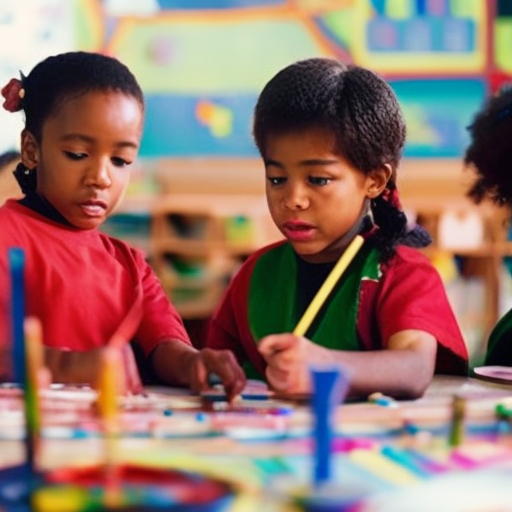
To foster creativity in your students, implement research-based strategies that encourage innovative thinking and engagement with their learning environment.
One effective strategy is to incorporate role-playing activities into your lessons. Role-playing allows students to step into different perspectives and explore various scenarios, stimulating their imagination and encouraging them to think creatively. It also promotes empathy and enhances their understanding of different viewpoints.
Another strategy is to encourage artistic expression. Providing opportunities for students to engage in art projects, such as drawing, painting, or sculpting, allows them to express themselves in a non-verbal way and tap into their creative potential. Artistic expression also fosters problem-solving skills and critical thinking, as students need to make decisions about color, composition, and materials.
Furthermore, creating a supportive and inclusive learning environment is crucial for nurturing creativity. Encourage collaboration and open communication among students, allowing them to share ideas and build upon each other’s creativity. Celebrate and value diverse perspectives, as this will inspire students to think outside the box and explore new possibilities.
Fostering Critical Thinking Skills Through Creativity

Implementing creative learning environments is an effective way to foster critical thinking skills in students, as it encourages innovative thinking and engagement with the learning process. By incorporating problem-solving techniques and enhancing analytical skills, students are able to develop a deeper understanding of the subject matter and apply their knowledge to real-world situations.
Here are three ways in which creative learning environments can foster critical thinking skills:
-
Encouraging open-ended questions: By posing open-ended questions, students are encouraged to think critically and explore multiple perspectives. This helps them develop their analytical skills and consider different solutions to a problem.
-
Providing hands-on activities: Engaging students in hands-on activities allows them to apply their knowledge in practical ways. This promotes critical thinking as they analyze the situation, identify patterns, and make informed decisions.
-
Promoting collaboration: Collaborative activities and group discussions encourage students to think critically by sharing ideas, challenging assumptions, and considering alternative viewpoints. This fosters a supportive and inclusive learning environment where students can learn from each other’s perspectives.
Incorporating Technology for Innovative Learning
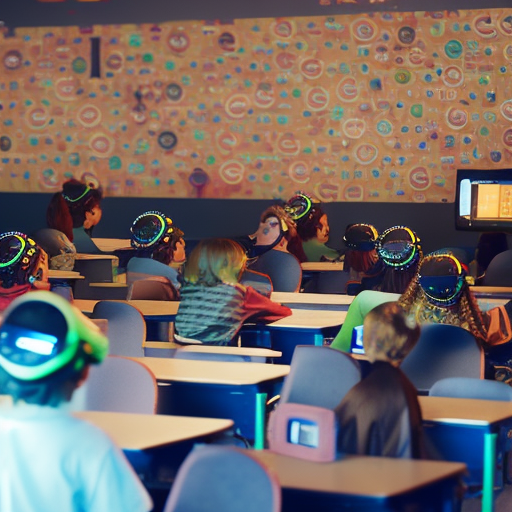
By embracing the integration of technology, you can create an innovative learning environment that enhances critical thinking skills and promotes student engagement. Technology integration in education has revolutionized the way teachers teach and students learn. With the use of digital tools and resources, you can create interactive and dynamic learning experiences that cater to the diverse needs and interests of your students.
Incorporating technology allows you to implement innovative teaching methods that go beyond traditional classroom practices. For example, you can use interactive whiteboards or virtual reality simulations to bring abstract concepts to life, making learning more engaging and memorable. Online platforms and learning management systems enable you to provide personalized and differentiated instruction, giving each student the opportunity to learn at their own pace and in their preferred learning style.
Furthermore, technology integration promotes collaboration and communication among students. Through online discussion boards, video conferencing, and collaborative document editing, students can work together on projects, share ideas, and provide feedback to one another. This not only enhances their critical thinking and problem-solving skills but also prepares them for the collaborative nature of the modern workplace.
Promoting Collaboration and Teamwork in a Creative Setting

Creating a creative learning environment that promotes collaboration and teamwork is essential for fostering innovation and critical thinking skills among students. By engaging students in collaborative projects and problem-solving activities, they’re able to develop important skills such as communication, cooperation, and problem-solving.
Here are three effective strategies for promoting collaboration and teamwork in a creative setting:
-
Group Work: Encourage students to work together in groups to complete tasks and projects. This allows them to learn from each other’s strengths and perspectives, fostering a sense of teamwork and cooperation.
-
Peer Feedback: Incorporate peer feedback sessions where students can provide constructive criticism and support to their peers. This not only promotes collaboration, but also helps students develop their communication and critical thinking skills.
-
Team-building Activities: Organize team-building activities that encourage students to work together towards a common goal. This can include group games, problem-solving challenges, or even collaborative art projects. These activities help build trust, improve communication, and enhance teamwork skills.
Embracing Diversity and Inclusion in the Classroom
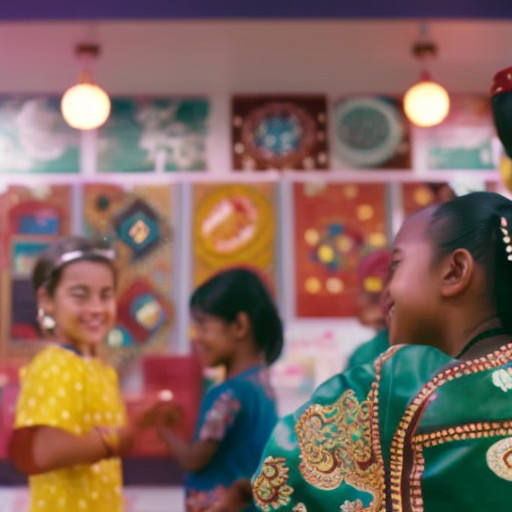
To create an inclusive and diverse classroom environment, it’s crucial to embrace the unique perspectives and backgrounds of all students, fostering a culture of acceptance and collaboration. Diversity inclusion goes beyond simply having students from different ethnic, cultural, and socioeconomic backgrounds in the same classroom. It means actively seeking out and valuing diverse perspectives, experiences, and identities.
Creating an inclusive classroom requires intentional effort to ensure that all students feel seen, heard, and valued.
Equity empowerment is at the heart of embracing diversity and inclusion. It means providing equal opportunities for all students to succeed and thrive, regardless of their background or circumstances. This involves recognizing and addressing systemic barriers that may exist, such as unequal access to resources or biased assessment practices. It also means actively promoting fairness and justice in the classroom, so that every student has an equal chance to learn and grow.
In an inclusive and diverse classroom, students learn from one another and broaden their perspectives. They develop empathy and understanding, preparing them for a global society that values diversity and fosters collaboration.
Creating a Safe Space for Risk-Taking and Mistakes
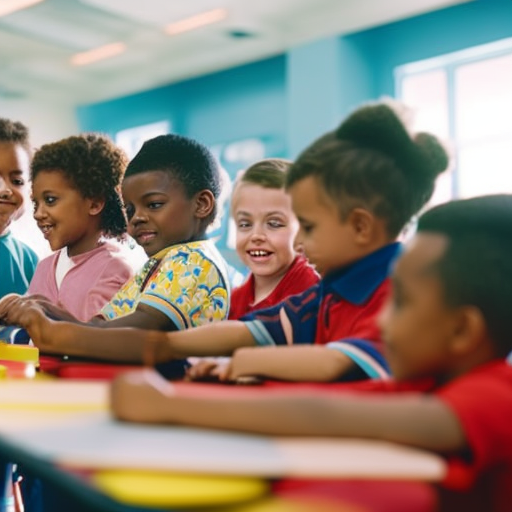
In order to foster a supportive and growth-oriented learning environment, it’s essential to establish a safe space where students feel encouraged to take risks and learn from their mistakes. Creating such a safe space involves several key elements:
-
Cultivate a culture of trust and respect: Encourage open communication and empathy among students. Foster an environment where everyone feels valued and appreciated, regardless of their abilities or background.
-
Emphasize the process, not just the outcome: Encourage students to focus on their effort and progress rather than solely on the end result. Help them understand that mistakes are an inevitable part of the learning process and should be embraced as opportunities for growth.
-
Provide constructive feedback and support: Offer guidance and encouragement when students make mistakes, helping them understand where they went wrong and how they can improve. Create opportunities for peer feedback and collaboration, allowing students to learn from each other’s mistakes.
Cultivating a Growth Mindset in Students

Establishing a safe space for risk-taking and mistakes sets the foundation for cultivating a growth mindset in students. By creating an environment where students feel safe to take risks and make mistakes, they’re more likely to develop resilience and embrace challenges as opportunities for growth.
Fostering a growth mindset involves promoting the belief that abilities and intelligence can be developed through effort and dedication. It’s about shifting the focus from fixed traits to the potential for growth and improvement. Research has shown that students with a growth mindset are more motivated, persistent, and eager to learn. They see setbacks as temporary and believe in their ability to overcome obstacles.
To cultivate a growth mindset, educators can encourage students to view mistakes as learning experiences rather than failures. They can provide constructive feedback that emphasizes effort and improvement rather than solely focusing on the end result. By praising students for their hard work and perseverance, educators can reinforce the idea that progress is more important than perfection.
Additionally, educators can teach students about the concept of neuroplasticity – the brain’s ability to change and adapt. By explaining that intelligence isn’t fixed and can be developed through practice and learning, students are more likely to embrace challenges and see them as opportunities for growth.
Engaging Parents and Guardians in the Creative Learning Process

Engaging parents and guardians is a crucial component of fostering a creative learning environment that supports student growth and achievement. When parents are actively involved in their child’s education, it creates a strong partnership between home and school, leading to better academic outcomes and overall well-being.
Here are three ways to engage parents and guardians in the creative learning process:
-
Encourage parent involvement: Provide opportunities for parents to participate in school activities and events, such as parent-teacher conferences, open houses, and volunteering. This involvement allows parents to understand their child’s progress and actively contribute to their learning journey.
-
Foster a culture of creative parenting: Encourage parents to embrace creativity and innovation in their parenting approach. Share resources and ideas that promote creative thinking, problem-solving, and imagination. This can include activities, games, or even simple conversations that spark curiosity and exploration.
-
Establish effective communication channels: Maintain regular and open lines of communication with parents. Use various channels such as newsletters, emails, and online platforms to share information about classroom activities, projects, and opportunities for parent involvement. Effective communication helps parents feel connected and informed about their child’s education.
Inspiring Success Stories From Creative Educators
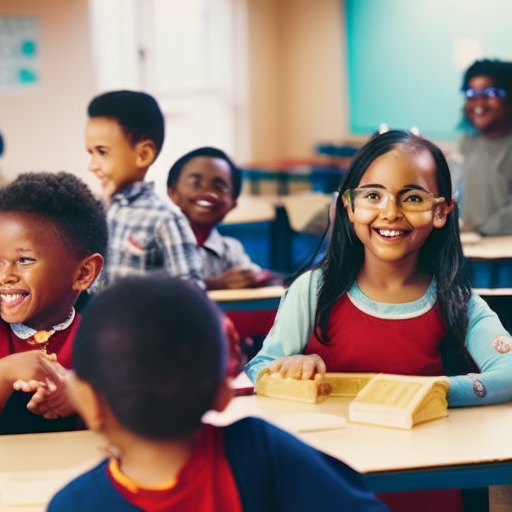
Parents and guardians who actively participate in their child’s education and embrace creativity as a parenting approach have witnessed inspiring success stories shared by creative educators. These educators have been instrumental in implementing innovative teaching methods and encouraging student-led projects, which have had a profound impact on the learning experiences of their students.
One such success story comes from Ms. Johnson, a passionate art teacher who believed in the power of creativity to unlock students’ potential. She introduced an innovative teaching method called ‘Design Thinking’ in her classroom, where students were encouraged to come up with creative solutions to real-world problems. Through this approach, students developed critical thinking skills, collaboration, and empathy, which not only enhanced their academic performance but also prepared them for the challenges of the future.
Another inspiring story is that of Mr. Rodriguez, a science teacher who empowered his students to take ownership of their learning through student-led projects. He gave them the freedom to choose topics of interest and guided them in conducting research, designing experiments, and presenting their findings. As a result, students became active participants in their own education, fostering a sense of curiosity, independence, and self-confidence.
These success stories highlight the transformative power of creative educators who embrace innovative teaching methods and empower students to take charge of their learning. By nurturing creativity and providing opportunities for student-led projects, these educators have created dynamic learning environments that inspire and motivate students to achieve their full potential.
Frequently Asked Questions
How Can Creativity Be Integrated Into Traditional Subjects Like Math and Science?
You can integrate creativity into math and science by fostering hands-on activities that encourage innovative thinking. By incorporating creative problem-solving and exploration, you can make these subjects more engaging and enjoyable for students.
What Is the Role of the Teacher in Fostering Creativity in Students?
As a teacher, your role in fostering creativity is crucial. By encouraging curiosity, providing opportunities for self-expression, and supporting risk-taking, you create a nurturing environment where students can thrive and unleash their creative potential.
How Can Schools Measure and Assess Creativity in Students?
To measure and assess your creativity as a student, schools can use various assessment methods, such as portfolio reviews, project-based assessments, and self-reflection activities. Classroom strategies like open-ended assignments and collaborative projects also foster creativity.
What Are Some Examples of Successful Creative Learning Environments in Different Educational Settings?
Examples of successful creative learning environments in different educational settings include project-based learning, makerspaces, and STEAM programs. These environments benefit students by fostering curiosity, collaboration, and critical thinking skills, leading to deeper understanding and engagement in their learning.
How Can a Creative Learning Environment Support Students With Diverse Learning Needs?
In a creative learning environment, inclusive strategies and personalized approaches can support students with diverse learning needs. By fostering a sense of belonging and providing tailored instruction, every student can thrive and reach their full potential.
Conclusion
You’ve witnessed the power of creativity in education.
Did you know that a study conducted at the University of Cambridge found that students in creative learning environments scored higher in critical thinking skills?
This statistic highlights the immense impact of fostering creativity in the classroom.
By embracing innovative teaching strategies, encouraging risk-taking, and cultivating a growth mindset, educators can create a foundation for success in their students’ lives.
Let’s continue to inspire and empower the next generation through creative learning.


